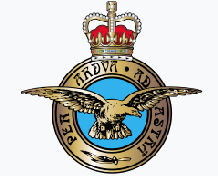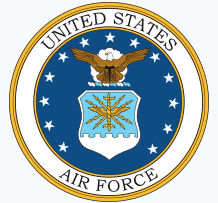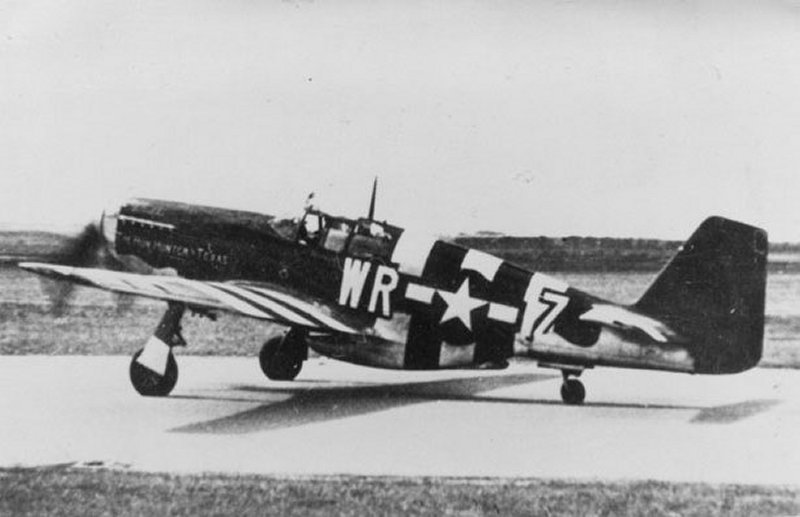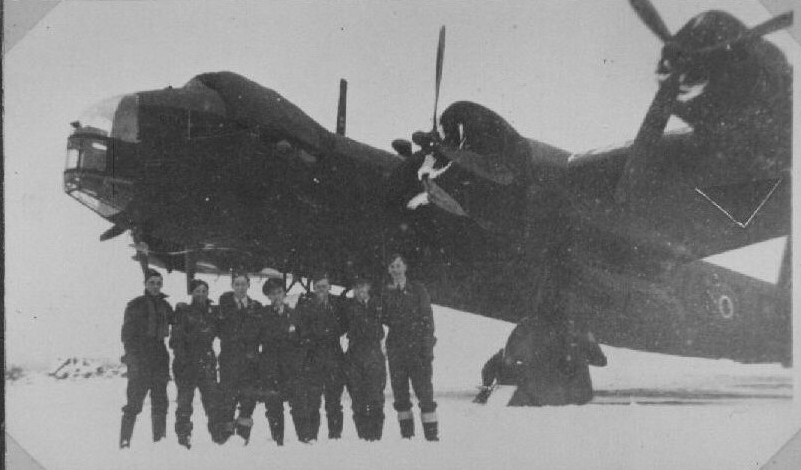

 solid black;float:left;">
solid black;float:left;">
Mustang 42-106448, 383 Squadron (364 Fighter Group) USAAF:
Flight Officer Thomas W. Kiley, USAAF
Stirling LK-236, MA-Y, 161 Squadron RAF:A P51-B Mustang 42-106448 from 383 Squadron (364 Fighter Group) crashed after a collision with a Stirling close to Potton killing all the aircrew of both machines. Note that some sources state "P51-D".


Both images are of the actual planes involved in this tragic incident. The image on the left was taken when the Mustang was in the 354th USAAF Fighter Squadron as WR-Z, and pilotted by Captain Bert W. Marshall, USAAF, and previously by Captain Henry W. Brown, USAAF. The image is creditted to Captain Marshall. Image and details obtained from Peter Randall at Little Friends. Peter states that the plane was Brown's assigned machine, but was being used by Marshall on that day only. The image on the right is Stirling LK236 MA-Y that was involved in the collision.
It seems there was a mock dog fight in the area of Tempsford Airfield whilst Stirling LK236 was landing at the base and the Mustang pilot lost control causing a collision. I am not convinced of the accuracy of this belief; I suspect it to be a "simple" accidental collision between the Stirling on its final approach to Tempsford, and a possibly damaged or malfunctioning Mustang whose pilot was either not in control, or trying to land his crippled aircraft, as described in the paragraph following the green box. The pilot may have baled out of his aircraft (before or after the collision?), but too low for his parachute to open fully.
There was a dummy target practice bomb found nearby in the early 1970s, but it is not confirmed it came from either aircraft and may have been a simple previous training loss.
Details obtained from Aircraft lost on Allied Force’s Special Duty Operations & Associated Roll of Honour page 481.
Pilot Thomas W. Kiley is buried at Madingley American Cemetery in Cambridgeshire, click on his name at the top of this page to see his memorial. Click on the "photos" tab to see a larger image. The following is some additional information provided by Mr. Peter Randall at the "Little Friends" site, and reproduced with his kind permission:
I just wonder if the plane, not considered fit for operational use, developed a sudden and unforeseen problem in that dummy attack which contributed to, or maybe was the outright cause, of the collision? It may not even have been a dummy attack at all, simply a plane out of control and sadly colliding with the Stirling. In my mind, there never was any stigma or blame to be attached to F/O Kiley; and who could even say that it was a dummy attack as no-one survived the incident? If the plane was in trouble and diving, it might well have looked like an "attack". And both aircraft were in the exact place for an attempted landing at RAF Tempsford. I think it is time to put any view that the American pilot was in any way "responsible" for the accident, firmly into the trash can. Whatever the circumstances, I see it as a pure accident, with no "blame" attaching to anyone, just an absolutely tragic event.
It should be noted that there is some confusion over whether it was this Mustang that hit a nearby cottage, killing its occupant, or one of two other planes entirely, Halifax LK743 or Mosquito HX972. There is some suggestion on the internet that either of the three planes was involved. I believe it to have most probably been the Mosquito. It is most widely thought that this Mustang actually crashed near Sandy Railway Station. A contact, James Dagwell, reports his stepfather's father seeing the aircraft crash near the street named Peel's Place in Sandy, but also suggests another Mustang hit the cottage in Tetworth - see Tempsford Mosquito.
I have identified this aircraft and the station it was operating from: 383 USAAF Fighter Squadron was part of the 364th Fighter Group, operating out of RAF Honington in Suffolk, which is not a great deal in distance from Sandy. They operated P51 Mustangs and P38 Lightnings. And in the list of names was Thomas Kiley, service number T-62984, rank Flight Officer. There are few other details for this gentleman.
There is some interesting information about the plane itself. I have used the actual aeroplane image in this page, obtained from that thread.
Another contact has stated that as a lad, he cycled to the crash site and made a sketch of the wreckage. He has promised to send me a photocopy of the drawings he made.
The circumstances of this accident are overwhelmingly sad. The loss of both crews, of eight brave young men, was extremely unfortunate. In these circumstances, we will never know just what happened in those last few moments on that chilly, winter's day. May they all rest in peace.